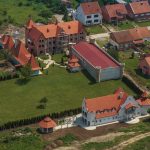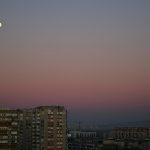June 26, 2018 — Zagreb welcomes to both visitors and locals, without many sacrifices.
Could the rest of Croatia follow suit?
Could dalmatinci stand to learn something from purgeri?
Ban Jelacic Square was a bit desolate last November, a week or so before Advent in Zagreb launched. I was there for a weekend away from the coast with some ornery friends in need of clubs which close after 3 a.m.
There were people, for sure. But they weren’t there for Advent, the crown jewel of Zagreb’s tourism machine. No.
I noticed the pace of their strides and laser-like attention.
No selfie-sticks.
No tour groups.
No restaurant greeters accosting passersby with the Snickers tag line, “Hungry?”
Nobody blocking my vision with a pamphlet for some kitschy tour.
These were locals. The city seemed to pulsate for them.
I was a tourist in Zagreb and nobody seemed to care. It was intoxicating.
I wanted more of Zagreb’s nonchalance towards my presence. For a lad from the Dalmatian coast, that’s as incongruous as a Rabbi demanding a bacon sandwich.
What the hell is going on here?
Is this some sort of perverse reverse psychology trick? Or has Zagreb tapped into a new, stealthy form of tourism otherwise unseen in this country?
I wasn’t the only one to notice. TimeOut recently tried to describe Zagreb’s confounding new identity, calling it “a Croatian success story.”
“Zagreb is, in any case, an unusual and unique hybrid, a northern European city warmed by the climate and the culture of the south,” the author Jonathan Bousfield wrote.
It’s a stark contrast from Der Spiegel’s October 2017 declaration that Zagreb could “easily win the title of the most boring city, at least in Europe.” The German paper also claimed the city’s best attribute was the highway leading out of town to the coast.
The piece stung Croatia’s capital, which was in the throes of strategic rejiggering of its tourism infrastructure. Was Der Spiegel wrong, or did something radical happen in less than one season?
No Sun, No Sea, No Problem
The TimeOut piece touts Zagreb’s newfound ability to show its best face without dousing itself in too much makeup and a disingenuous warmth. Zagreb is a pseudo-voyeuristic atmosphere, where locals and visitors experience the city shoulder-to-shoulder. A sort of tourism devoid of the exploitative “sun and sea” model infesting the Dalmatian coast.
The results are beginning to show. Zagreb’s tourism industry growth as measured by arrivals over the last five years is double that of the rest of Croatia’s, according to the Croatian Institute for Tourism’s Sanda Čorak. Oh, you’re counting overnight stays? Ok, well then Zagreb’s tourism industry is growing three times faster than Croatia’s.
The perverse thing about this new Zagreb? It doesn’t seem to care that you arrived, or if you’re having an exceptional experience.
It may be a testament to the stealthy habits of Zagreb’s service workers, but I can’t remember a single meal which featured more than a single check-in by the waiter. It seems a triple-check has become the norm in some parts of Dalmatia, as waiters interrupt your chewing to ask “Is everything ok?” during every course.
It betrays a sort of confidence; the kitchens in Zagreb know they’re cranking out good meals. In Dalmatia? Perhaps not so much.
In other words: Zagreb has become a bizarre outlier in a largely predictable Croatian tourism scene. Call it anti-tourism.
The Tried And Tired
I’ve experienced Dalmatia as a traveler on several occasions. It often felt like the tourism-equivalent of an amusement park ride: strapped into a plastic cookie-cutter seat and whip-lashed through a lazily-curated experience seemingly copy-pasted from town to town.
Nearly all of it feels mechanical, with excessive adjectives and exclamation points abound.
Come and marvel at our unparalleled historic sites!
Welcome! Have some of our delicious, homemade, authentic cuisine in our wonderful konoba!
Try our fun, exciting and informative excursion to the National Park, where you can wonder and marvel at the natural beauty of Croatia!
Oh boy.
Istria, perhaps Croatia’s best-managed tourism playland, maintains the illusion of authenticity through subterfuge. Local seasonal workers and visitors rarely collide to have scripted exchanges.
For example: Whereas restaurant hawkers will accost you on Stradun in Dubrovnik, Motovun’s greeters often lie in wait just within the entrance of the eatery. The pleasantries are the same, inevitably. Yet placing the onus on the guest to engage is a subtle difference that changes the entire experience.
Or artists and artisans, who in Dalmatia often stand at attention facing the door of their shop, ready to pounce on any curious soul who dares poke their nose through the entrance. In Groznjan, artists will be plying their trade in their shop, offering any interlopers a simple nod and a “Dobar dan.”
Both are crude bits of stagecraft, yet they give Istria the feel of a place alive and functioning sans the tourist.
Zagreb, however, ditches the stagecraft altogether. As TimeOut wrote, Zagreb’s offerings have “been tailored to suit the needs of the local public. The result is that odd thing that we are all looking for but very rarely find: a visitor-friendly city where the tourists feel like locals and the locals don’t feel displaced.”
Could the Model Translate?
“When you consider Zagreb is a city away from the coast, I’d say it’s unique in its evolution,” Čorak of the Tourism Institute said. “It can serve as an example of tourism which doesn’t interfere with the locals.”
It’s all by design, according to those actually making a living off the tourism industry. Oh, they care that you have a good time, but won’t let it color your experience or feel for the town in any meaningful, positive way.
“People are starting the perceive Zagreb as a destination,” said Ante Grancarić, himself a Dalmatian transplant now working in the capital as Project Manager at the Swanky Mint Hostel (full disclosure: I’ve had a few memorable Friday nights at Swanky’s bar/Monkey Garden).
Grancaric said the pairing of constant destinations such as the Museum of Broken Relationships and myriad events suited for both locals and visitors alike — such as Advent, the INMusic Festival, etc., — offer a foundation to build a longer-lasting tourism season.
He’s also in the throes of organizing the second-annual Pop Up Summer Garden, an outdoor booze and culture venue not far from the city.
With efforts like the Pop-Up garden, Zagreb is filling gaps in its landscape and schedule — not only to draw visitors but to keep locals happy as well.
“Demand is always the key,” Grancaric said. “If you go into the city today, you’d have a hard time finding something closed. In comparison to ‘the season’ along the Adriatic, in Zagreb it’s a bit longer; people are starting to visit even in March,” he added.
This is all part of a larger and well-coordinated plan, according to Zagreb Tourism Board Director Martina Beinenfeld.
It may seem like an accident, sure. That’s sort of the point.
Zagreb’s newfound tourism identity involves a broader look at long-term sustainability. Beinenfeld repeated the word several times in the course of an emailed Q&A.
The goal is to strike a balance between local needs, cultural respect, and historic preservation, she said. It all seems a bit rudimentary. Until she got to the nut of the issue:
“We position Zagreb as a year-long destination that does not know the term ‘seasonality’ as is the case with some of our seaside destinations.” [emphasis added]
It’s a clever bit of mental distortion. Zagreb can’t dream of seasonal tourism because of a temperamental climate and the basic truth that Zagreb… well… can’t rely on looks alone. It also needs personality and charm.
This rude dose of reality would force most cities or towns to give up the ghost and bank on tax-handouts to IT firms and tech incubators.
Zagreb, instead, relies on atmosphere — that something which disappears the moment you see a group touting selfie-sticks.
TimeOut’s piece, as opposed to Der Spiegel’s, focused on an “ambiance”. An identity divorced from the guidebook-touting masses, squinting through viewfinders and live-streaming their visits. It’s a form of tourism distinctly lacking in other destinations within Croatia.
Zagreb offers an experience, not a nice view.
Croatia wants tourists. Zagreb wants travelers.
“Tourism in other places can learn from the development of Zagreb’s tourism,” Čorak said. “Above all, it is necessary for tourists and citizens to create a safe and attractive environment, then to develop a greater number of manifestations and different events.”
More Work To Be Done
Of course, there are hiccups along the way. Zagreb’s airport schedule could use a few more inbound flights from other locations, and perhaps a quicker tempo.
Some events never take off despite their best intentions. Grancaric himself pointed to a specific frustration with locals who want no part of the burgeoning scene and refuse to cooperate.
“It’s important everyone works as a partner,” he said.
C’est la. Some Croatian problems seem to be universal.
Could Zagreb offer a model for the mass of land currently awash in rental apartments, boutique hotels and knock-off tchotchke shops selling faux Croatian merchandise made in Thailand and China?
Can Zagreb, odd as it feels to write and read, be a new model for Croatia’s tourism industry? Grancaric said sure, if it has the patience to build up a scene over the course of five to six years, like Zagreb did.
“The coast can’t go on like this, just copy-pasting the same things,” he said. “When you’re yourself, you cannot miss the mark.”









